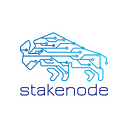Step-by-Step: How to Nominate STAKENODE validator on Polkadot
Polkadot is a global network of blockchains and the foundation for a new, peer-to-peer internet. The platform is powerful enough from a scalability, interoperability, developability, and governance perspective to help make the vision of Web3 a reality.
Polkadot takes the next logical step in decentralized computing, facilitating a shared global state that includes data of blockchains, applications, and money. Any developer who taps into Polkadot’s shared security model can invent, in ad hoc ways, the APIs used for someone else to connect to it. Developers can create a UTXO chain, such as Bitcoin, a blockchain with the virtual machine, such as Ethereum, or a future blockchain yet to be invented. Instead of a single blockchain adding every possible feature (ZK-snarks, Wasm smart contracts, etc.), developers can compose existing blockchain features into higher-order applications. Polkadot’s shared security enables a composability model where your blockchain can trust all the other blockchains in the network.
Polkadot can be thought of as an “infrastructure for infrastructure.” First-order parachains built atop the main relay chain will provide the core building blocks for the system.
These will be high-throughput, high-utility chains that provide essential services for the rest of the network. Included in these core first-order parachains could be things like general-purpose smart contracts chains, oracles, and identity chains.
Setup: Things You Will Need
The first step is to go to Polkadot’s UI and make sure that you’re connected to the Polkadot network by going to the Settings tab and Selecting Polkadot and create your account with the “add account” button.
To keep your assets safe while staking, it is recommended that you create 2 accounts:
- Stash account: This account is where you keep your tokens and its only function is to safely hold the funds, so we recommend you keep it offline.
- Controller account: This is the account that you use to manage the tokens held by the stash account. You’ll use this account to start nominating validators and also to end your nominations
You can find more about Accounts creation in the Polkadot wiki.
To nominate validators you need to bond DOT held in your stash account.
Instructions to Nominate on Polkadot
Connect to a Network
- Log into the Polkadot UI.
- In the left top corner, select Polkadot from available Live Networks.
Bond Your Tokens & Nominate
Staking on Polkadot and Kusama consists of bonding tokens followed by nominating one or more validators with the bonded tokens.
- Open the Polkadot UI,
- Go to Network/Staking section and click on the Account Actions tab.
- Click the “+ Nominator” button to bond your tokens for staking.
- Specify your stash and controller accounts from the dropdowns. In the value bonded field, put how many tokens you want to bond.
- Choose where to deposit your staking rewards from the “Payment Destination” dropdown.
In our case, we elected to deposit our staking rewards to the stash account and to increase the amount at stake. This will allow us to compound our earnings and maximize our return. However, you should choose the option that best suits your needs
You can filter and search STAKENODE_POWERNODE or our validator node adress: 15awHgV1np9jxyWC7pnMWAEgg8z2toLuCcJfWjtmA1cWHWQr
- Hit the “Bond & Nominate” button to proceed to the next step.
- Fill in the password of the stash account and click the “Sign and Submit” button to execute the bonding transaction.
If your nomination was successful, you will a green “finalized” checkmark in the upper-right-hand corner of your screen, like the image below:
Congratulations! You have now staked your tokens and are helping to support the security of the Polkadot network while at the same time earning staking rewards.
Feel free to follow STAKENODE on Twitter and our website, or contact us via mail if You have any questions.
We are happy to help walk you through the nomination process and all proof-of-stake (POS) aspects or answer any other questions you have.
https://twitter.com/stakenode_dev
email: support@stakenode.dev
